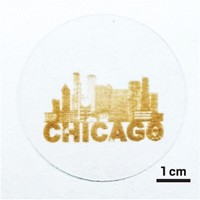Advertisement
Grab your lab coat. Let's get started
Welcome!
Welcome!
Create an account below to get 6 C&EN articles per month, receive newsletters and more - all free.
It seems this is your first time logging in online. Please enter the following information to continue.
As an ACS member you automatically get access to this site. All we need is few more details to create your reading experience.
Not you? Sign in with a different account.
Not you? Sign in with a different account.
ERROR 1
ERROR 1
ERROR 2
ERROR 2
ERROR 2
ERROR 2
ERROR 2
Password and Confirm password must match.
If you have an ACS member number, please enter it here so we can link this account to your membership. (optional)
ERROR 2
ACS values your privacy. By submitting your information, you are gaining access to C&EN and subscribing to our weekly newsletter. We use the information you provide to make your reading experience better, and we will never sell your data to third party members.
Materials
Nanowires keep white LEDs flexible
Devices based on gallium nitride keep on shining even when bent
by Neil Savage, special to C&EN
April 18, 2016
| A version of this story appeared in
Volume 94, Issue 16
Flexible light-emitting diodes allow designers to create wearable displays, flexible screens, and bendable biomedical devices. Today’s best technology for flexible light sources is organic LEDs. But OLEDs have relatively short lifetimes, and bright ones aren’t very energy efficient. Now, researchers have shown the potential to overcome those limitations by building flexible white LEDs out of a more robust, efficient inorganic semiconductor—gallium nitride (ACS Photonics 2016, DOI: 10.1021/acsphotonics.5b00696). Joël Eymery of France’s Alternative Energies & Atomic Energy Commission; Maria Tchernycheva of the University of Paris, Saclay; and colleagues grew GaN nanowires on a sapphire substrate and embedded them in polydimethylsiloxane laced with a commercially available phosphor, yttrium aluminum garnet doped with cerium. The team peeled the material from the substrate and sandwiched it between a silver nanowire mesh and a thin metal foil, which serve as electrodes. The device’s conversion efficiency—the ratio of electrons in to photons out—reached 9.3%. That’s low, but flexible devices’ efficiencies don’t need to be as high as those of general lighting applications, Eymery says. The devices could be bent to a radius of 5 mm without any reduction in performance.





Join the conversation
Contact the reporter
Submit a Letter to the Editor for publication
Engage with us on Twitter